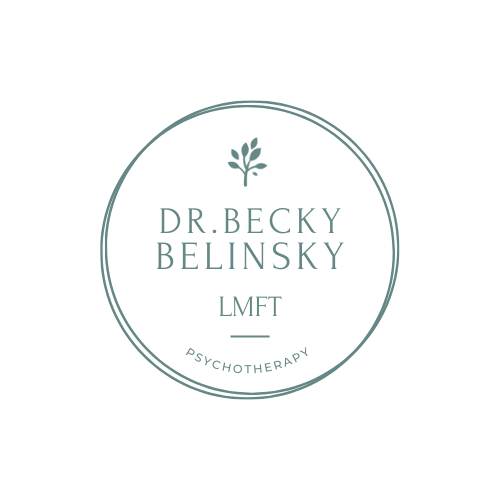Understanding the Different Types of Eating Disorders and Their Treatment
Eating disorders are complex mental health conditions that affect millions of people worldwide, cutting across age, gender, and socioeconomic backgrounds. These disorders often revolve around distorted perceptions of body image, food, and weight. In this blog post, we will delve into the various types of eating disorders and explore the treatment options available for those who are affected.
What Are Eating Disorders?
Eating disorders are serious, often life-threatening conditions characterized by disturbances in eating behaviors and emotions related to food and body weight. These disorders are not merely about food but are rooted in complex psychological and emotional issues. It's important to recognize that eating disorders affect people of all genders, sizes, races, etc. Eating disorders don’t have a “look,” and a person can be in any size body and still struggle with an eating disorder.
1. Anorexia Nervosa
Anorexia nervosa is characterized by a relentless pursuit of extreme thinness and an intense fear of gaining weight. People with anorexia often limit their food intake, engage in excessive exercise, have a preoccupation with food, and engage in excessive body checking. Treatment for anorexia typically includes therapy, nutritional counseling, and sometimes medical intervention to address physical health concerns.
2. Bulimia Nervosa
Bulimia nervosa is characterized by a cycle of binge-eating followed by purging through behaviors such as vomiting, excessive exercise, or laxative use. Bulimia nervosa also typically has a restrictive aspect to the disorder, as the restriction begins the cycle of the binging and purging.
3. Binge-Eating Disorder
Binge-eating disorder involves recurrent episodes of consuming large amounts of food in a short time, often to the point of discomfort, without the compensatory behaviors seen in bulimia. People with this disorder may feel guilt and distress about their eating habits.
3. Avoidant/Restrictive Food Intake Disorder
Avoidant/Restrictive Food Intake Disorder (ARFID) is a lesser-known but significant eating disorder characterized by extreme food selectivity and limited dietary preferences. Individuals with ARFID may have an intense aversion to certain tastes, textures, or smells, which can lead to an extremely restricted diet. Unlike other eating disorders, weight and body image concerns are not the primary focus in ARFID; instead, the disorder is driven by sensory sensitivities and fear of negative food experiences. ARFID can lead to nutritional deficiencies and impaired physical and psychological well-being, making early recognition and intervention crucial for those affected.
4. Eating Disorder Not Otherwise Specified
Eating Disorder Not Otherwise Specified (EDNOS) is a diagnostic category that encompasses a wide range of disordered eating behaviors and symptoms that do not fit the criteria for specific eating disorders like anorexia nervosa or bulimia nervosa. Many people struggle with EDNOS, and some studies show that EDNOS is the most common form of eating disorder.
Individuals with EDNOS may exhibit various atypical eating patterns, such as significant binge-eating episodes, purging behaviors, or a combination of different eating disorder features. EDNOS emphasizes the diversity and complexity of eating disorders, highlighting that disordered eating can take many forms. Just like other eating disorders, EDNOS requires careful evaluation and appropriate treatment to address the unique challenges and health risks associated with these atypical eating behaviors.
Treatment Options
The road to recovery from an eating disorder can be challenging, but it is essential to know that help and support are available. Here are some of the key treatment options for individuals with eating disorders:
1. Psychotherapy:
Therapy is a cornerstone of treatment for eating disorders. Psychotherapy can help individuals understand and change their negative thought processes and behaviors, promoting healthier relationships with food and their bodies, and explore the underlying emotional causes and reasons for the eating disorder.
2. Nutritional Counseling:
Nutritional counseling, provided by registered dietitians, helps individuals establish balanced eating patterns and understand the nutritional needs of their bodies. It is an integral part of treatment for many people in recovery.
3. Medical Monitoring:
All eating disorders can come with risks to physical health, so seeing a medical doctor that is familiar with eating disorders is essential.
4. Medications:
Medications may be prescribed as part of the treatment plan for some eating disorders. Antidepressants and anti-anxiety medications can help manage symptoms of depression and anxiety often associated with these disorders.
5. Support Groups:
Participating in support groups and connecting with others who have similar experiences can be incredibly valuable for individuals with eating disorders. Sharing stories and coping strategies can provide a sense of community and understanding.
Conclusion
Understanding the different types of eating disorders and their treatment is a crucial step towards providing support and care for individuals who are affected by these conditions. If you or someone you know is struggling with an eating disorder, it's important to seek help from qualified professionals and to remember that recovery is possible with the right treatment and support. Eating disorders are not a choice but a complex mental health issue, and seeking help is the first step toward a healthier, happier life. If you think you may be struggling with an eating disorder and would like some extra support or just a place to discuss and figure out what the best treatment options for you are, I’m here to help. You can call me at (424) 231-5877 or send me a note here.
